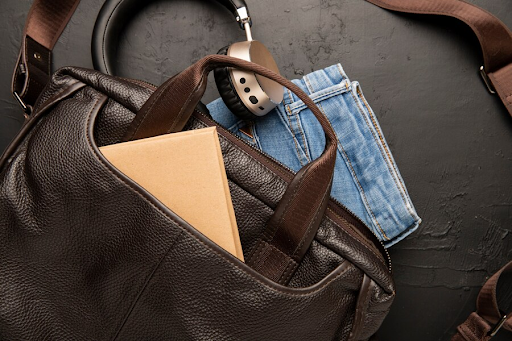When it comes to accessories, few items are as timeless and versatile as a leather wallet. Not only does it serve as a practical storage solution for your cash and cards, but it also adds a touch of sophistication to your everyday carry. However, not all leather wallets are created equal. To ensure you’re investing in a high-quality piece that will stand the test of time, there are several important factors to consider.
1. Leather Quality
The cornerstone of any great leather wallet is the quality of the leather itself. Opting for full-grain leather ensures durability and character, as it’s made from the top layer of the hide and retains the natural grain. Top-grain leather, while slightly more affordable, is also a solid choice, as it’s been sanded and buffed to remove imperfections while retaining its strength. Avoid wallets made from genuine or bonded leather, as these materials are often lower in quality and prone to wear and tear.
2. Craftsmanship
The craftsmanship of a leather wallet can make all the difference in its longevity and aesthetic appeal. Look for wallets that are handcrafted by skilled artisans, as they tend to pay greater attention to detail and take pride in their workmanship. Stitching should be tight and uniform, with no loose threads or fraying edges. Additionally, check the quality of the hardware, such as zippers and clasps, to ensure smooth functionality.
3. Design and Functionality
While aesthetics are certainly important, don’t overlook the practical aspects of your leather wallet. Consider the number of card slots and compartments it offers, as well as any additional features like a coin pocket or ID window. The ideal design will strike a balance between form and function, providing ample storage space without sacrificing style. Think about your everyday needs and choose a wallet that aligns with your lifestyle.
4. Size and Thickness
The size and thickness of a leather wallet can impact both its comfort and portability. Opt for a slim design that won’t bulge in your pocket or weigh you down, especially if you prefer to travel light. However, make sure it still offers enough room to accommodate your essentials without feeling cramped or overstuffed. Keep in mind that leather wallets tend to break in and conform to your body over time, so don’t be alarmed if it feels slightly snug at first.
5. Color and Finish
Leather wallets come in a variety of colors and finishes, ranging from classic neutrals like black and brown to more adventurous hues like navy or burgundy. Consider your personal style and wardrobe when selecting a color, as you’ll want a wallet that complements your existing accessories. Additionally, think about the finish of the leather—whether you prefer a matte, glossy, or distressed look. Ultimately, choose a wallet that speaks to your individual taste and preferences.
6. Brand Reputation
When purchasing a leather wallet, it’s important to buy from a reputable brand known for its quality and integrity. Do your research and read reviews from other customers to gauge the brand’s reputation and customer satisfaction. Look for brands that source their leather ethically and prioritize sustainable practices. While you may pay a premium for a well-known brand, the investment is often worth it in terms of quality and peace of mind.
7. Price and Value
While price shouldn’t be the sole determining factor, it’s still an important consideration when shopping for a leather wallet. Set a budget based on your financial means and expectations, keeping in mind that quality leather wallets are an investment that should last for years to come. Compare prices across different brands and retailers to ensure you’re getting the best value for your money. Remember, a higher price tag doesn’t always guarantee better quality, so prioritize factors like leather quality and craftsmanship above all else.


